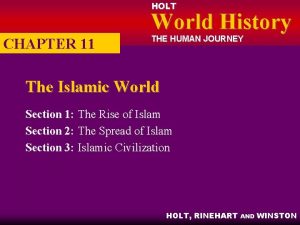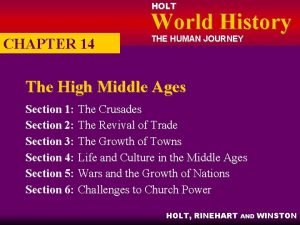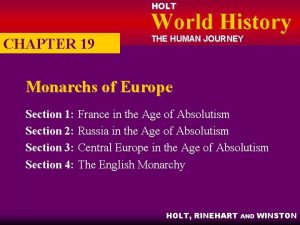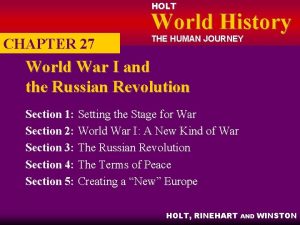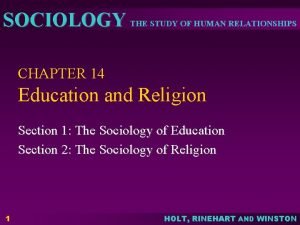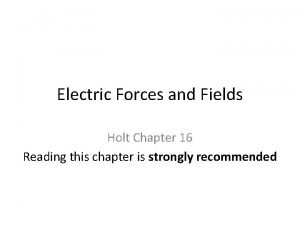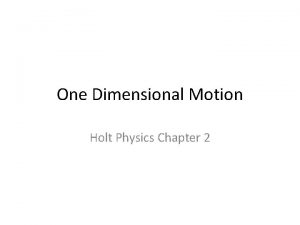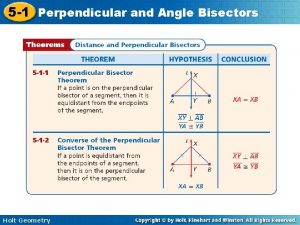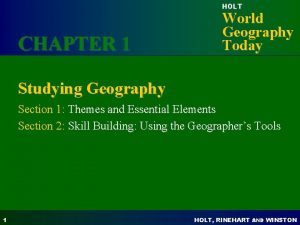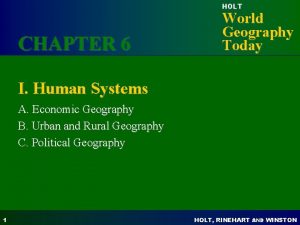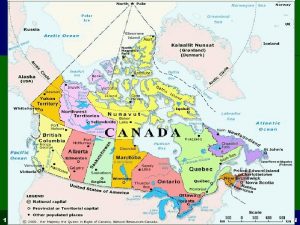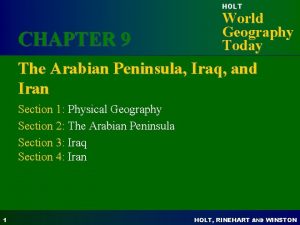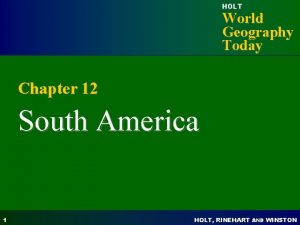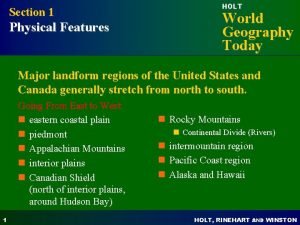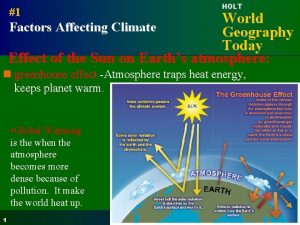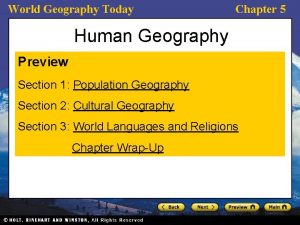HOLT World Geography Today CHAPTER 5 Human Geography










- Slides: 10

HOLT World Geography Today CHAPTER 5 Human Geography Section 1: Population Geography Section 2: Cultural Geography Section 3: World Languages and Religions 1 HOLT, RINEHART AND WINSTON

Section 1 Population Geography HOLT World Geography Today Objectives: n How do geographers study population? n What are some important trends in world population? 2 HOLT, RINEHART AND WINSTON

HOLT Section 1 World Geography Today Population Geography Studying population: n Geographers study relationships between populations and environments, using: n maps n graphs n population pyramids n spatial perspective n Key statistics: n population density n population distribution 3 n population change n natural increase HOLT, RINEHART AND WINSTON

Section 1 Population Geography HOLT World Geography Today World population trends: n World population is increasing rapidly. n Economic development results in lower population growth rates. n Many less-developed nations are gradually reducing population growth. n Future population projections vary, but populationrelated challenges are inevitable. 4 HOLT, RINEHART AND WINSTON

HOLT Section 2 World Geography Today Cultural Geography Objectives: n How do geographers study culture? n How do cultures change over time? 5 HOLT, RINEHART AND WINSTON

Section 2 Cultural Geography HOLT World Geography Today Studying culture: n culture traits—activities and behaviors common to groups of people n culture regions—areas in which people share culture traits 6 HOLT, RINEHART AND WINSTON

Section 2 Cultural Geography HOLT World Geography Today How cultures change n Cultures change through general processes such as migration, war, and trade. n Key concepts: n innovation—adoption of new and useful ideas n diffusion—spread of ideas n globalization—worldwide adoption of culture traits n traditionalism—maintenance of traditional practices 7 HOLT, RINEHART AND WINSTON

Section 3 World Languages and Religions HOLT World Geography Today Objectives: n What is the geography of the world’s languages? n What are three main types of religions that geographers identify? 8 HOLT, RINEHART AND WINSTON

Section 3 World Languages and Religions HOLT World Geography Today Geography of languages: n Languages have spatial characteristics, linked to specific regions and peoples. n Languages are divided into families and branches. n Geographers study the origins and spread of languages. 9 HOLT, RINEHART AND WINSTON

Section 3 World Languages and Religions HOLT World Geography Today Types of religions: n ethnic—focus on one ethnic group; examples: Hinduism, Judaism n animist—focus on spirits and forces of nature; often have ethnic basis n universalizing—seek worldwide following; examples: Islam, Christianity 10 HOLT, RINEHART AND WINSTON
 Holt world geography today
Holt world geography today World history the human journey answer key
World history the human journey answer key World history the human journey
World history the human journey Holt world history the human journey
Holt world history the human journey Zeppleins
Zeppleins Holt sociology the study of human relationships
Holt sociology the study of human relationships World geography today
World geography today Direction of dipole moment
Direction of dipole moment Holt physics chapter 8 fluid mechanics test answers
Holt physics chapter 8 fluid mechanics test answers A common flea is recorded to have jumped
A common flea is recorded to have jumped 5-1 perpendicular and angle bisectors
5-1 perpendicular and angle bisectors

